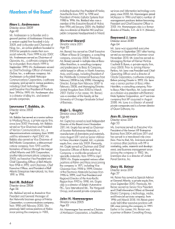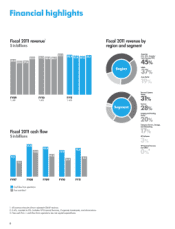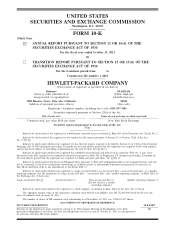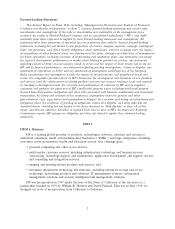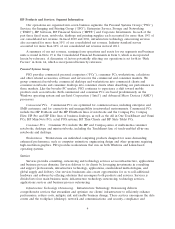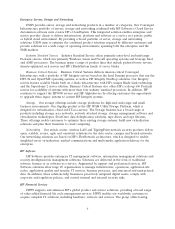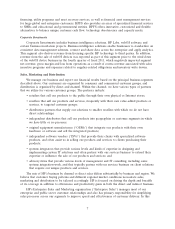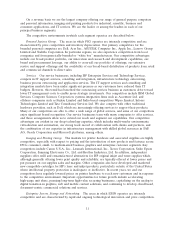HP 2011 Annual Report Download - page 16
Download and view the complete annual report
Please find page 16 of the 2011 HP annual report below. You can navigate through the pages in the report by either clicking on the pages listed below, or by using the keyword search tool below to find specific information within the annual report.capacity, Enterprise Sales also works closely with HP’s enterprise businesses (Services, ESSN and HP
Software), which manage specialty resources focused on their specific products, including UNIX,
servers, storage, networking, software and support offerings. Enterprise Sales manages our direct
distribution activities for commercial products and go-to-market activities with systems integrators and
ISVs. Enterprise Sales also is responsible for driving HP’s horizontal and vertical solutions with both
HP’s enterprise services business and the partners listed above. In addition, Enterprise Sales drives
HP’s vertical sales and marketing approach in the communication, media and entertainment, financial
services, manufacturing and distribution and public sector industries.
PSG manages SMB customer relationships and commercial reseller channels relationships, due
largely to the significant volume of commercial PCs that HP sells through these channels. PSG also
leads the Volume Direct organization, which is charged with the processing of direct sales for volume
products. In addition, PSG manages direct online sales through the Consumer Exchange and the Small
Business Exchange.
IPG manages HP’s overall consumer-related sales and marketing relationships. IPG also manages
consumer channel relationships with third-party retail locations for imaging and printing products, as
well as other consumer products, including consumer PCs, which provides for a bundled sale
opportunity between PCs and IPG products.
Manufacturing and Materials
We utilize a significant number of outsourced manufacturers (‘‘OMs’’) around the world to
manufacture HP-designed products. The use of OMs is intended to generate cost efficiencies and
reduce time to market for HP-designed products. We use multiple OMs to maintain flexibility in our
supply chain and manufacturing processes. In some circumstances, third-party OEMs manufacture
products that we purchase and resell under the HP brand. In addition to our use of OMs, we currently
manufacture a limited number of finished products from components and sub-assemblies that we
acquire from a wide range of vendors.
We utilize two primary methods of fulfilling demand for products: building products to order and
configuring products to order. We build products to order to maximize manufacturing and logistics
efficiencies by producing high volumes of basic product configurations. Configuring products to order
permits configuration of units to the particular hardware and software customization requirements of
customers. Our inventory management and distribution practices in both building products to order and
configuring products to order seek to minimize inventory holding periods by taking delivery of the
inventory and manufacturing immediately prior to the sale or distribution of products to our customers.
We purchase materials, supplies and product subassemblies from a substantial number of vendors.
For most of our products, we have existing alternate sources of supply, or such sources are readily
available. However, we do rely on sole sources for laser printer engines, LaserJet supplies and parts for
products with short life cycles (although some of these sources have operations in multiple locations in
the event of a disruption). We are dependent upon Intel as a supplier of processors and Microsoft
Corporation (‘‘Microsoft’’) for various software products. However, we believe that disruptions with
these suppliers would result in industry-wide dislocations and therefore would not disproportionately
disadvantage us relative to our competitors. For processors, we also have a relationship with AMD, and
we have continued to see solid acceptance of AMD processors in the market.
Like other participants in the high technology industry, we ordinarily acquire materials and
components through a combination of blanket and scheduled purchase orders to support our
requirements for periods averaging 90 to 120 days. From time to time, we experience significant price
volatility and supply constraints for certain components that are not available from multiple sources.
Frequently, we are able to obtain scarce components for somewhat higher prices on the open market,
which may have an impact on gross margin but does not disrupt production. We also acquire
8


